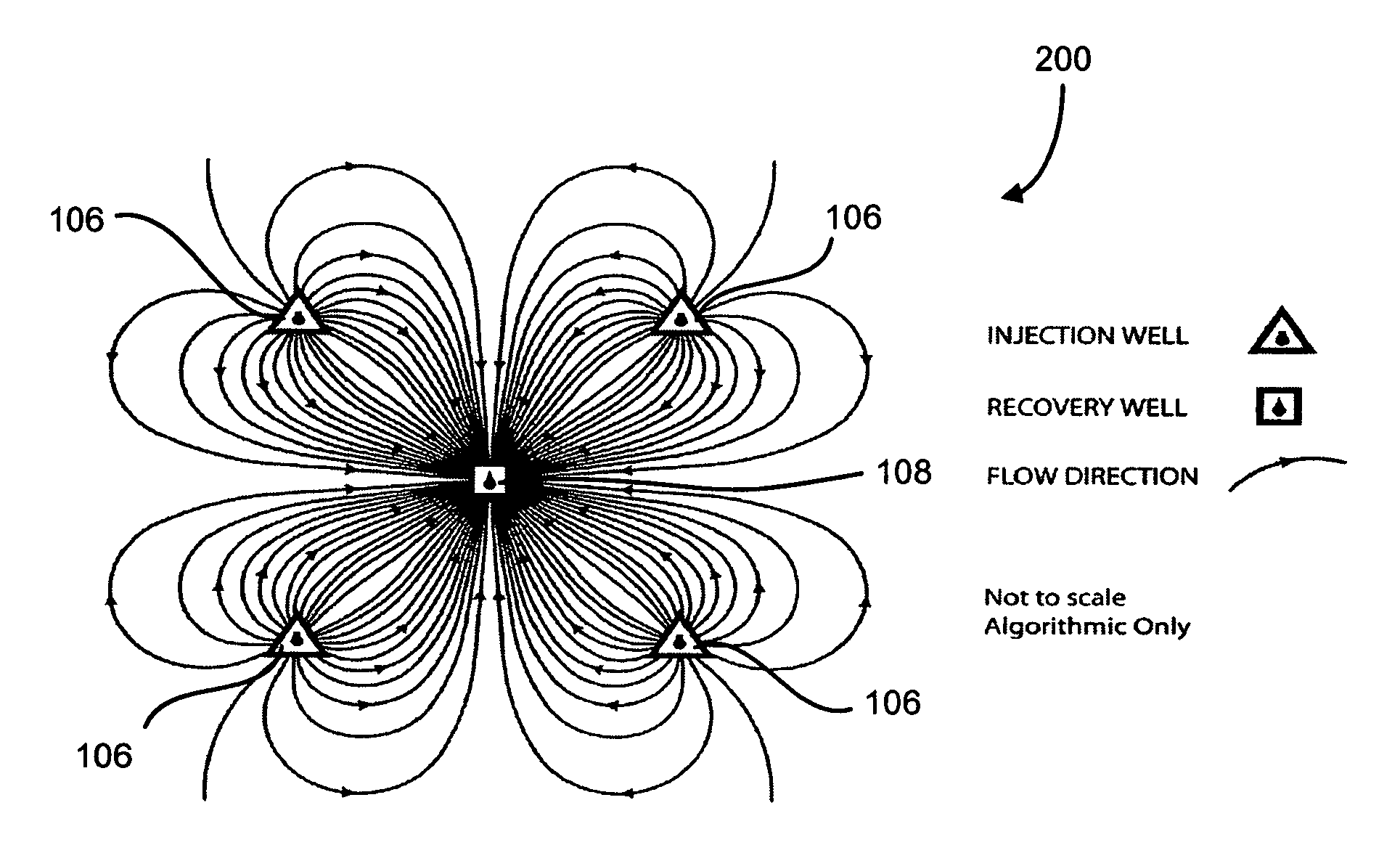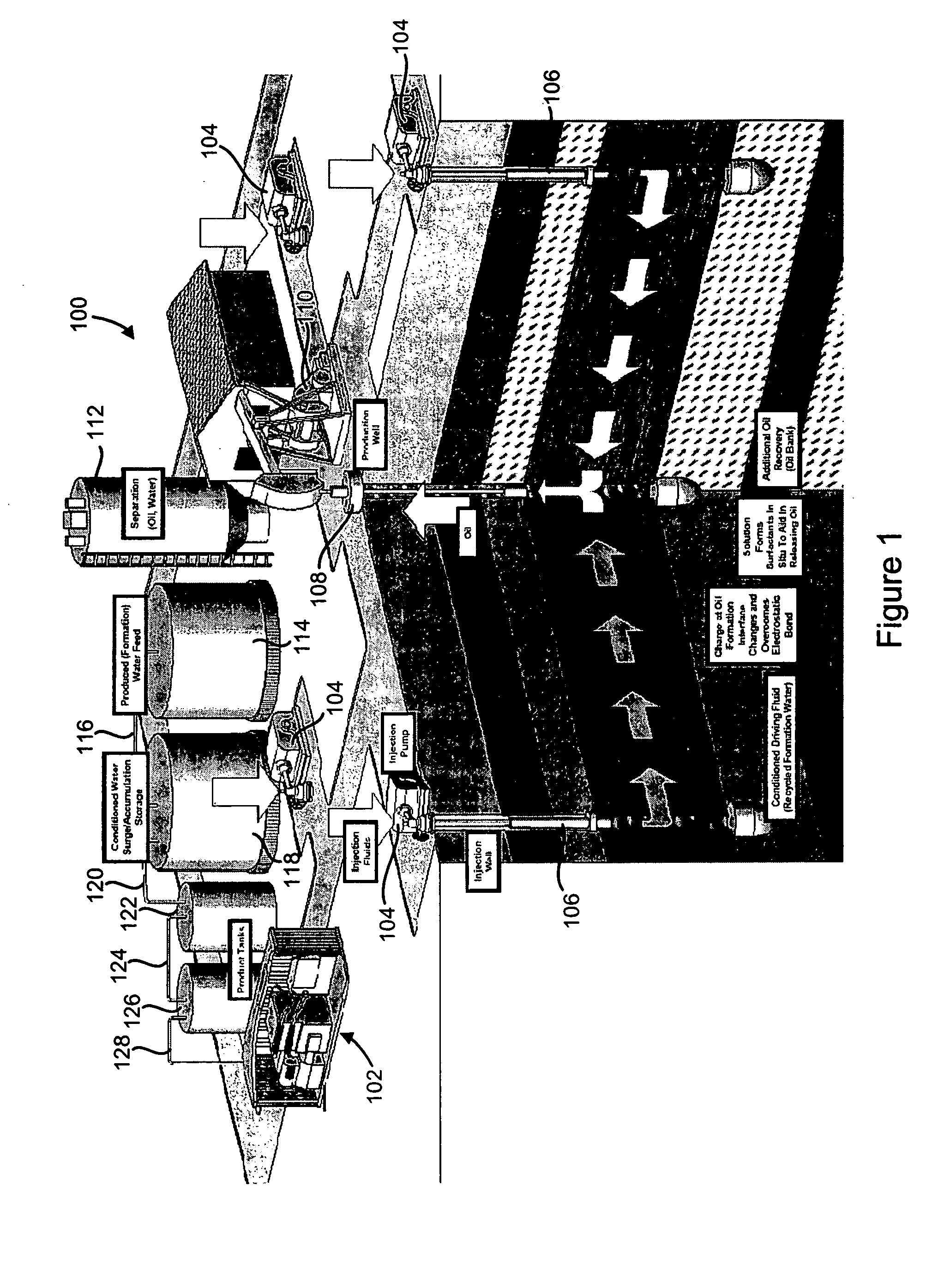Electrolytic system and method for enhanced release and deposition of sub-surface and surface components
a technology of electrolysis and surface components, applied in the direction of hydrocarbon oil cracking process, separation process, borehole/well accessories, etc., can solve the problems of significant surfactant cost in relation to the benefits gained, high technological pathway, and large amount of oil remaining unrecovered, so as to maximize the extraction efficiency of the target component, improve the efficiency of the extraction process, and reduce the structure of operating costs
- Summary
- Abstract
- Description
- Claims
- Application Information
AI Technical Summary
Benefits of technology
Problems solved by technology
Method used
Image
Examples
example 1
[0100]An apparatus consisting of a column of packed sand, a fluid vessel, a pressure cylinder and a collection device is used to conduct the experiments. The sand column is constructed using clear or black PVC tubing and wrapped in heat tape for temperature control, with control and measurement apparatus at the inlet and outlet. The sand pack was prepared using unwashed, unsorted, sacked commercial sand consistent with experimental standards. The column is initially saturated with ˜1% saline water for a minimum of one week to establish the initial solid-liquid wettability, and to remove entrained air prior to the initial displacement with hydrocarbon fluid.
[0101]The displacement and aging of the water-saturated column by hydrocarbon fluid yields a mixed wettability state. The injected solutions are placed into the pressurized fluid vessel and injected into the sand column. The displaced fluid volume is collected and measured by phase, oxidation / reduction potential eH, pH hydrocarbon...
PUM
| Property | Measurement | Unit |
|---|---|---|
| Electric potential / voltage | aaaaa | aaaaa |
| Electric potential / voltage | aaaaa | aaaaa |
| Flow rate | aaaaa | aaaaa |
Abstract
Description
Claims
Application Information
 Login to View More
Login to View More - R&D
- Intellectual Property
- Life Sciences
- Materials
- Tech Scout
- Unparalleled Data Quality
- Higher Quality Content
- 60% Fewer Hallucinations
Browse by: Latest US Patents, China's latest patents, Technical Efficacy Thesaurus, Application Domain, Technology Topic, Popular Technical Reports.
© 2025 PatSnap. All rights reserved.Legal|Privacy policy|Modern Slavery Act Transparency Statement|Sitemap|About US| Contact US: help@patsnap.com



